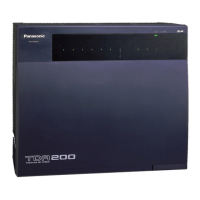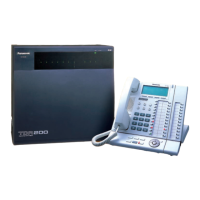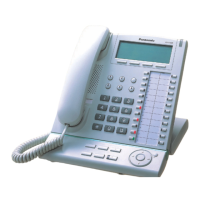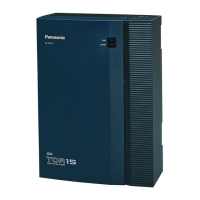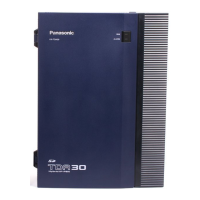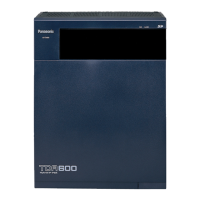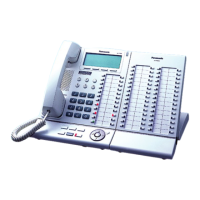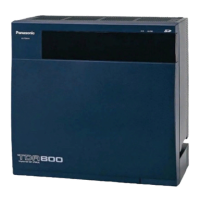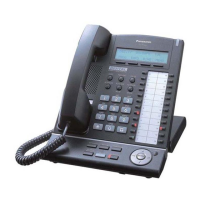Conditions
• A trunk which is used for a private network should be assigned "Private" as the networking type. (®
1.1.1.1 Incoming Trunk Call Features—SUMMARY)
• To establish a QSIG network (® 1.30.4 QSIG Standard Features), each ISDN (QSIG) connection in a TIE
line network must have the port on one PBX assigned as a master port, and the port on the other PBX
assigned as a slave port. PBXs that support this feature are KX-TDA series, KX-TDE series, and
KX-NCP series PBXs.
[TIE Line Network Connection Example]
PBX-1
PBX-3
PBX-2
Extn.1000
:
Extn.1999
Extn. 2000
:
Extn. 2999
(A) Master
(B) Master
(C) Master
QSIG Network
(A) Slave
(C) Slave
(B) Slave
Extn. 3000
:
Extn. 3999
• TIE Line Call by Own PBX Extension Number
TIE line calls can be made using your own PBX extension numbering scheme (1–64).
PBX-1
TIE Line
PBX-2
InterfaceInterface
Extn.1033
Extn.1011 Extn.1012
TIE Line Network
Outside Caller
Trunk
Trunk
Dials "123-4567".
Telephone Company
Destination: 1033
DID No.: 4567
Dials "1033".
Explanation:
The PBX first searches local extensions for a matching number. If a dialled number is not found at the local
PBX, the call can then be sent to a remote PBX, and the remote PBX checks the TIE Line Routing Table
for a corresponding entry.
Feature Guide 329
1.30.1 TIE Line Service
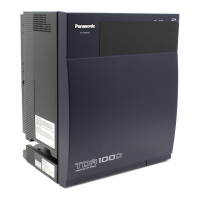
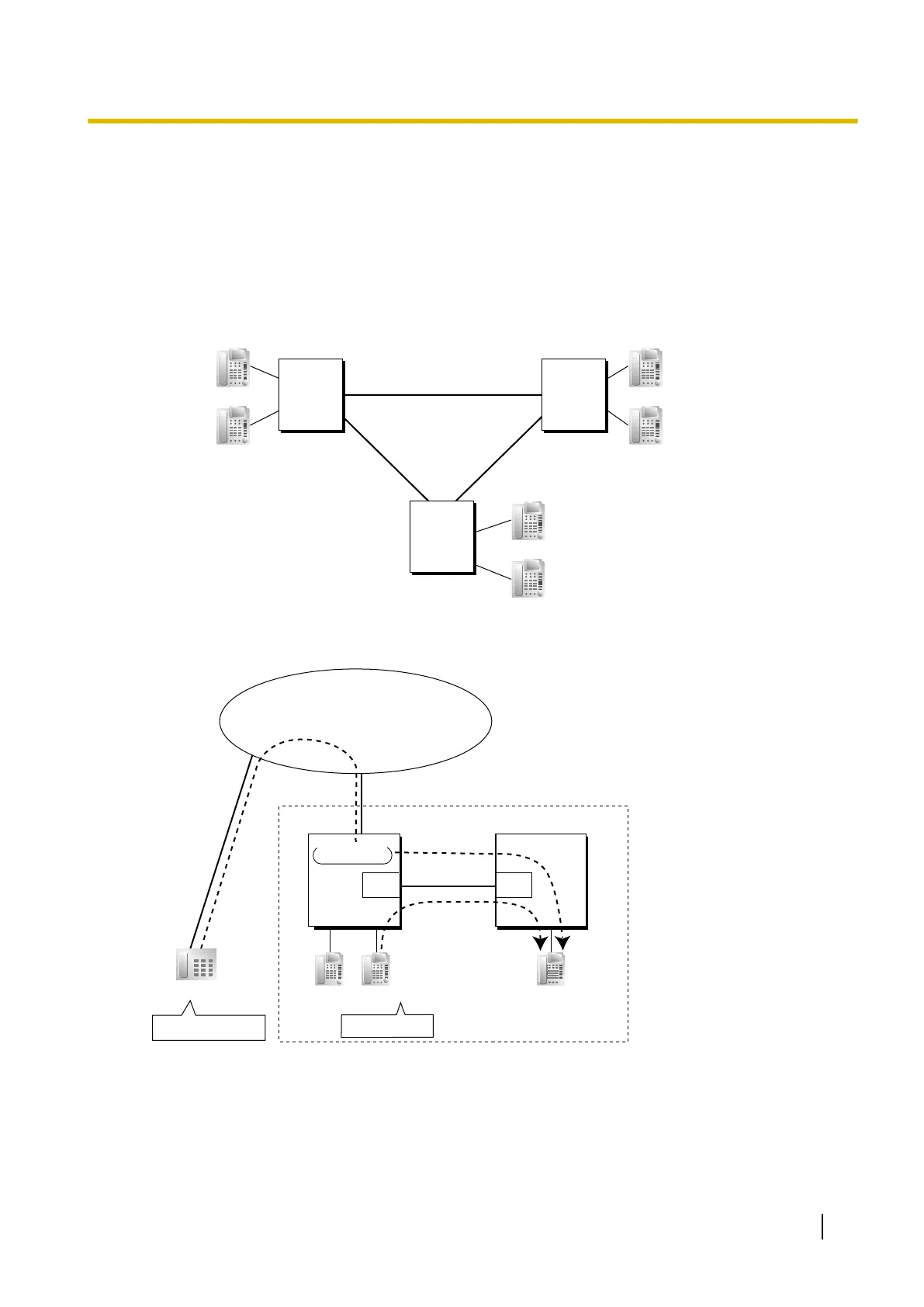